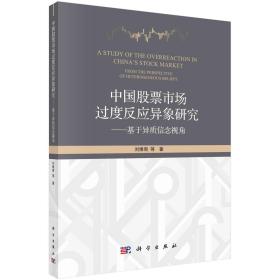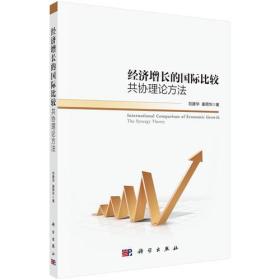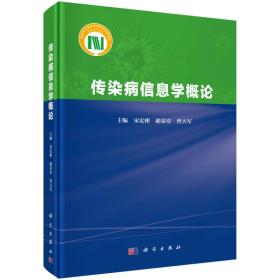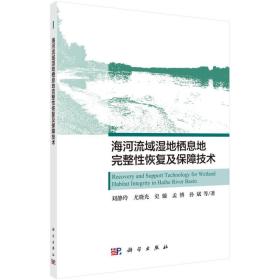
农业与生物科学专业英语
¥ 14.36 3.7折 ¥ 39 九品
仅1件
北京海淀
认证卖家担保交易快速发货售后保障
作者谭万忠、王进军 著
出版社科学出版社
出版时间2015-11
版次31
装帧平装
货号A8
上书时间2024-10-30
- 在售商品 暂无
- 平均发货时间 15小时
- 好评率 暂无
- 最新上架
商品详情
- 品相描述:九品
图书标准信息
- 作者 谭万忠、王进军 著
- 出版社 科学出版社
- 出版时间 2015-11
- 版次 31
- ISBN 9787030459312
- 定价 39.00元
- 装帧 平装
- 开本 32开
- 纸张 胶版纸
- 页数 254页
- 字数 354千字
- 正文语种 简体中文
- 丛书 普通高等教育“十二五”规划教材
- 【内容简介】
-
迄今国内大多数高校及大多数专业都开设了专业英语课程,但已有的相关教材和课程教学内容几乎均仅限于专业文献的选读,这样既限制学生学习课程的兴趣也影响教学质量。《农业与生物科学专业英语》是作者谭万忠、王进军对学习和教授专业英语课程的经验与教学成果的总结,其内容和编排系统都较新颖。全书内容分为9章,第1章概述专业英语的相关概念、课程内涵及学习策略;第2章讲述英文词汇学与词汇快速扩充方法;在第3章介绍提高文献阅读效率的技巧之后,第4章选编8篇农学与生物学文献供学生进行阅读实践;第5~7章讨论英语的写作基本理论知识,包括文章的组织结构与衔接、常见写作错误与校正及重要的语言程式;第8~9章分别讨论事务信函和科研论文的写作。每章都附有中文提要和练习题,书末附有不规则动词和名词、常用拉丁语词组及英语词缀等重要参考知识。
《农业与生物科学专业英语》可作为农林、生物和环境等学科各专业的本科教材使用,也可作为其他专业学者和英语爱好者的参考用书。 - 【目录】
-
前言
Chapter 1 An Introduction toAcademic English
1.1 Concept of academic English
1.2 Academic English course
1.3 The academic English course book
1.4 Organizing your study
1.5 Strategies for English learning
Chapter 2 Learning New Words and Extending Your Vocabulary
2.1 General strategies and skills for learning new words
2.2 English word formation
2.2.1 Conversion of words
2.2.2 Word compounding
2.2.3 Abbreviation
2.2.4 Affixation
2.3 Word roots
2.3.1 Some common roots
2.3.2 Exploring the basics of roots
2.4 Word element
2.4.1 Origin of word elements
2.4.2 Some words and their element forms
Chapter 3 Techniques for Improving Efficiency of Reading English Literatures
3.1 Reading with a purpose
3.2 Using the title
3.3 Surveying a book
3.4 Surveying a text using first few lines of paragraphs
3.5 Surveying a text using the first and the last paragraphs
3.6 Scanning
3.7 Knowing meaning of words or phrases in context
3.8 Multiple reading skills by knowing the text organization
Chapter 4 Selected Readings in Biology and Agriculture
4.1 Microorganism
4.1.1 History
4.1.2 Classification and structure
4.1.3 Habitats and ecology
4.1.4 Importance
4.2 Agriculture
4.2.1 Etymology and terminology
4.2.2 History
4.2.3 Workforce
4.2.4 Safety
4.2.5 Agricultural production systems
4.2.6 Production practices
4.2.7 Crop alteration and biotechnology
4.2.8 Environmental impact
4.2.9 Agricultural economics
4.2.10 Agriculture policy
4.3 Systematics, taxonomy and classification
4.3.1 The importance of biological classification
4.3.2 Taxonomic hierarchies
4.3.3 The goals of classification systems
4.3.4 Phenetic systematics
4.3.5 Cladistic systematics
4.3.6 Constructing phylogenies
4.3.7 Taxonomic keys
4.3.8 Summary
4.4 Weed management in organic crop production
4.4.1 Prevention
4.4.2 Sanitation
4.4.3 Cultural control
4.4.4 Crop competition
4.4.5 Mechanical control by tillage
4.4.6 Harvest management
4.4.7 Other control methods
4.4.8 Allelopathy
4.4.9 Biological weed control
4.4.10 Conclusion
4.5 Genetically modified crops
4.5.1 Gene transfer in nature and traditional agriculture..
4.5.2 History
4.5.3 Methods
4.5.4 Types of genetic engineering
4.5.5 Business of GM crops
4.5.6 Uses, actual and proposed
4.5.7 Extent of worldwide use of GM crops
4.5.8 Examples of genetically modified crops
4.5.9 Effects on farming practices
4.5.10 Regulation
4.5.11 Controversy
4.6 Archaea: the life's extremists
4.6.1 Archaea fossil record
4.6.2 Archaea ecology
4.6.3 Archaea systematics
4.6.4 Archaea morphology
4.7 Plant genomics - sowing the seeds of success
4.7.1 Crop genomics: growing potential
4.7.2 Model behavior: lessons from Arabidopsis and Brachypodium
4.7.3 Sensing change: responses to the environment
4.7.4 The tree of life
4.7.5 Concluding remarks
4.8 Lichens: an alliance between kingdoms
4.8.1 Fossil record of lichens
4.8.2 Life history and ecology
4.8.3 Systematics of lichens
4.8.4 More on morphology of lichens
Chapter 5 Awareness and Correction of Errors in Writing
5.1 Some common causes of error
5.2 Errors and corrections in standard usage
5.2.1 Cases of nouns and pronouns
5.2.2 Agreement of verb with subject
5.2.3 Agreement of pronoun with antecedent
5.2.4 Agreement of denominative adjective with its object
5.3 Unity and coherence in the sentence
5.3.1 Unity of thought
5.3.2 Unity of structure
5.3.3 Coherence
5.4 Errors and correction in spelling
5.4.1 Some effective ways of reducing misspelling
5.4.2 Some principles of spelling
5.5 Correct use of vocabulary and grammar
5.6 Writing styles
5.7 Writing tentativeness
Chapter 6 Structural Organization and Cohesion of General Texts
6.1 AND type connectives
6.2 OR type connectives
6.3 BUT type connectives
Chapter 7 Language Function
7.1 Language function one: description
7.1.1 Describing the size of things
7.1.2 Describing shape and orientation
7.1.3 Describing climate
7.1.4 Describing process
7.2 Language function two: definition
7.2.1 General definition
7.2.2 Reduced definition
7.2.3 Definition of academic subjects
7.3 Language function three: exemplification
7.4 Language function four: classification and analysis
7.4.1 Classification
7.4.2 Analysis
7.5 Language function five: comparison and contrast
7.5.1 Comparison
7.5.2 Contrast
7.5.3 Superlative
7.5.4 Comparative
7.6 Language function fix: cause and effect
7.7 Language function seven: generalization and qualification
7.8 Language function eight: interpretation of data
7.9 Language function nine: argumentation
7.10 Language function ten: drawing conclusions
Chapter 8 Writing Business Letters
8.1 The form of business letters
8.2 Parts of a business letter
8.2.1 Regular parts
8.2.2 Special parts of a letter
8.3 Parts of the envelope
8.3.1 Regular parts of an envelope
8.3.2 Special parts of an envelope
8.4 Some principles of writing contents of the business letter
8.5 Special types of business letters
8.5.1 Letter of enquiry
8.5.2 Order letter
8.5.3 Letter of applications and resume
8.6 Concluding remarks
Chapter 9 Whiting a Research Paper
9.1 Title of a paper
9.1.1 The topic
9.1.2 The authors and their addresses
9.2 The abstract
9.2.1 Informative abstracts
9.2.2 Indicative abstracts
9.2.3 Structured abstracts
9.2.4 Key words
9.3 Introduction
9.4 Materials and methods
9.4.1 Materials
9.4.2 Methods
9.5 Results
9.6 Discussion
9.7 Conclusions
9.8 Acknowledgements
9.9 References
Appendix I Groups of Affixes of English Words
Appendix II Common Group of Irregular Verbs
Appendix III List of Irregular Nouns
Appendix IV Some Common Latin Phrases in English Literatures
Appendix V Some New or Unfamiliar Words and Phrases in this Book
Appendix VI Important References
点击展开
点击收起
相关推荐
— 没有更多了 —

















以下为对购买帮助不大的评价